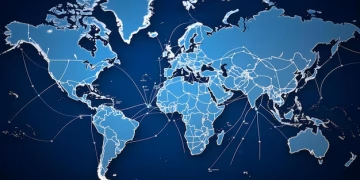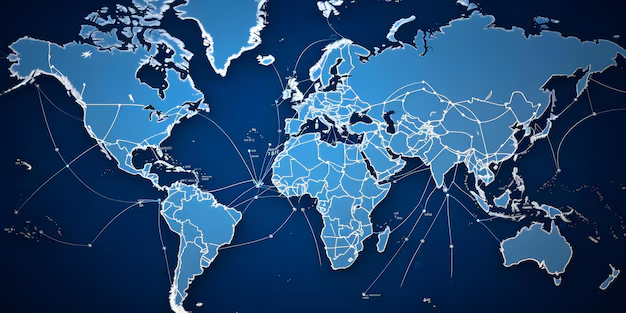By Maria Kalamatas | July 17, 2025
Geneva, July 17 — In response to fast-changing trade dynamics and mounting unpredictability in cross-border shipping, global logistics providers are quietly redrawing the maps of their supply chain networks.
A fresh study released this morning by LogiIndex Group reveals that nearly half of the world’s largest logistics operators have begun moving away from dependence on mega-hubs—like Shanghai, Rotterdam, and Los Angeles—and are instead building resilience through more flexible, regionally distributed networks.
“It’s not about size anymore,” said Sophie Langlais, European Logistics Director at AxisTrans. “It’s about location, adaptability, and how fast we can move when routes change overnight.”
Smaller Ports, Bigger Role
Secondary ports that were once considered peripheral are now stepping into the spotlight. Tangier Med, Gioia Tauro, and Port Klang have all reported a marked uptick in transshipment volumes since May. Meanwhile, logistics parks in inland hubs like Zaragoza, Duisburg, and Indianapolis are expanding rapidly as companies seek alternatives to congested coastal gateways.
Langlais explained that AxisTrans shifted 30% of its European inventory from Antwerp to inland warehouses in northern Italy over the past three months, citing frequent port delays and labor disruptions.
“We gained four days of responsiveness across our e-commerce orders just by moving upstream,” she added.
Capital Follows the Strategy
Private investment is following this geographic shift. Between April and June 2025, over $3 billion in funding went to regional logistics parks, with notable spikes in Southeast Asia and Central Europe. Investors are targeting infrastructure that supports flexibility: short-haul rail links, multimodal nodes, and modular storage.
“The market is no longer rewarding centralization,” noted Javier Duarte, logistics analyst at Geneva Trade Review. “Agility is the new currency in this business.”
At the same time, logistics tech firms are seeing surging demand for tools that can simulate route disruption scenarios, adjust shipment flows, and offer predictive inventory planning across multiple sites.
From Flow Control to Flow Anticipation
Instead of trying to dominate volumes in a few global hubs, many logistics players are now focused on being locally nimble. That means closer proximity to end markets, faster reactions to disruptions, and smarter segmentation of inventory.
“In the past, we optimized for scale,” Langlais said. “Now we’re optimizing for resilience.”























